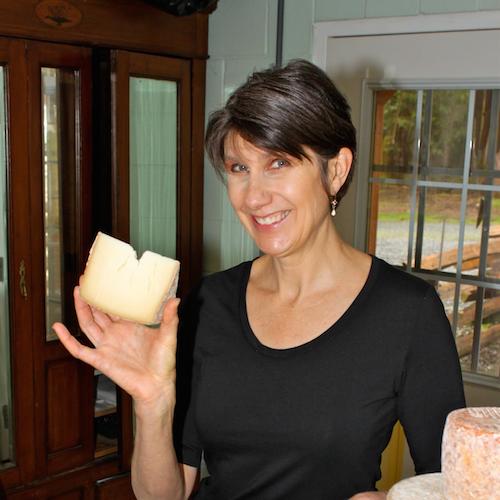
![]() What’s the difference between artisan and farmstead cheese?
What’s the difference between artisan and farmstead cheese?
![]() Although there may be little difference in how these two categories of cheeses taste, they tell the consumer something as to how the cheese was made. The terms are defined by our industry, rather than by regulators—meaning there is no legally binding definition at this time. Thankfully, the American Cheese Society (ACS) has created guidelines that cheesemakers of all sizes seem quite happy to abide by when it comes to labeling their product as artisan or farmstead. Here is what the ACS says:
Although there may be little difference in how these two categories of cheeses taste, they tell the consumer something as to how the cheese was made. The terms are defined by our industry, rather than by regulators—meaning there is no legally binding definition at this time. Thankfully, the American Cheese Society (ACS) has created guidelines that cheesemakers of all sizes seem quite happy to abide by when it comes to labeling their product as artisan or farmstead. Here is what the ACS says:
Farmstead
The cheese must be primarily made by hand with milk from the farmer’s own herd, or flock, on the farm where the animals are raised. Milk used in the production of farmstead cheeses may not be obtained from any outside source. Care and attention must be paid to the purity, quality, and flavor of the milk. The cheese must be ripened naturally, with emphasis on development of characteristic flavor and texture and without the use of shortcuts and techniques to increase yield and shelf life at the expense of quality. Respect for the traditions and history of cheesemaking are expected regardless of the size of the production.
Artisan
The cheese is produced primarily by hand, in small batches, with particular attention paid to the tradition of the cheesemaker’s art, and thus using as little mechanization as possible in the production of the cheese.
Most farmstead cheesemakers are quite small, but some are not, such as Crave Brothers Farmstead Cheese in Wisconsin, which milks 1,500 cows. Farmstead cheesemakers can use the term artisan in describing their cheeses.
Artisan makers vary in size from quite small, such as Oakleaf Creamery in southern Oregon, to quite large. An artisan cheesemaker may buy milk from several sources or use milk from their own herd, such as another Oregon cheesemaker, Rogue Creamery.




